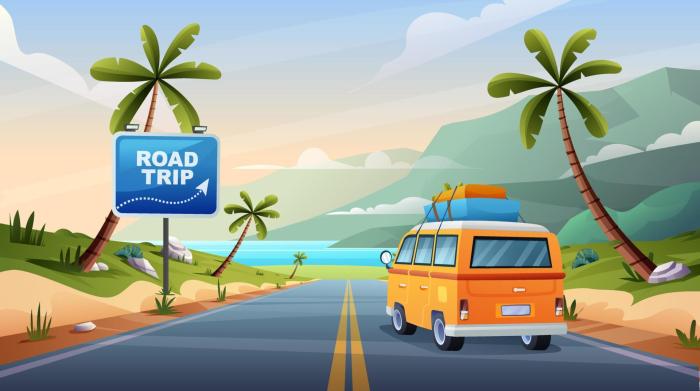Best Harriet Tubman sites offer a window into the extraordinary life and legacy of this courageous abolitionist. From exploring her role in the Underground Railroad to understanding her impact on the fight for freedom, these resources provide a wealth of information for anyone seeking to learn more about her incredible journey.
This exploration delves into various websites dedicated to Harriet Tubman, analyzing their strengths, weaknesses, and overall value. We’ll examine their content, structure, accessibility, and educational potential to help you find the most informative and engaging resources for your needs. Whether you’re a student, researcher, or simply someone interested in history, this guide will help you navigate the digital landscape of Harriet Tubman sites.
Overview of Harriet Tubman
Harriet Tubman, born Araminta Ross, stands as a towering figure in American history. Her unwavering commitment to freedom and her courageous actions during the pre-Civil War era continue to inspire generations. From her early life marked by hardship and oppression, to her pivotal role in the Underground Railroad, Tubman’s story is one of remarkable resilience and unwavering dedication to the abolitionist cause.Her life’s work was not merely a series of isolated acts; it was a consistent, dedicated struggle against the brutal institution of slavery.
This relentless pursuit of freedom, often undertaken at great personal risk, shaped the course of American history. She became a symbol of hope for enslaved people and a beacon of courage for those who sought to dismantle the system of oppression.
Harriet Tubman’s Role in the Underground Railroad
The Underground Railroad was a network of secret routes and safe houses used by enslaved African Americans to escape to freedom in the North and Canada. Tubman played a crucial role in this clandestine operation, leading countless people to freedom. She possessed an intimate knowledge of the terrain and the routes, and she was adept at navigating the dangers of the journey.
Her determination and courage were essential in guiding those seeking liberation. Her actions were not only daring but also deeply strategic, considering the potential risks and vulnerabilities.
Harriet Tubman’s Significance as an Abolitionist
Tubman was not merely a conductor on the Underground Railroad; she was a dedicated abolitionist. Her commitment extended beyond facilitating escapes; she actively worked to dismantle the system of slavery itself. She advocated for the rights of enslaved people, using her voice and influence to challenge the moral and legal justifications for slavery. Her unwavering belief in the inherent dignity of all people was a driving force behind her actions.
Exploring the best Harriet Tubman sites is fascinating, showcasing her incredible bravery and resilience. Thinking about how innovative concepts like the “hotel within a hotel concept” ( hotel within a hotel concept ) could potentially be used to create immersive experiences at these historical locations, perhaps with different thematic areas reflecting different stages of her life and work, is a really cool idea.
Ultimately, though, the best Harriet Tubman sites are about preserving her legacy and inspiring future generations.
Examples of Harriet Tubman’s Bravery and Resilience
Tubman’s courage and resilience are evident in countless stories of her bravery. One example is her repeated journeys into the South, despite the constant threat of capture and punishment. She risked her life to rescue family members and other enslaved people. Her determination to see them free demonstrates an unwavering commitment to the cause of abolition. Another example is her leadership during the Civil War, where she served as a scout and spy for the Union Army.
She showed exceptional adaptability and resourcefulness in challenging situations, using her intimate knowledge of the South to aid the Union effort.
Timeline of Key Events in Harriet Tubman’s Life
Tubman’s life was a testament to her enduring spirit and resolve. The following timeline highlights some of the key events that shaped her extraordinary life:
- 1820-1822: Born into slavery in Maryland. Early life marked by hardship, highlighting the brutality and injustice of the system.
- 1849: Escaped slavery, embarking on a perilous journey north. This act showcased her courage and determination in the face of adversity.
- 1850s: Actively involved in the Underground Railroad, leading numerous enslaved people to freedom. This period underscores her commitment to abolitionism and her pivotal role in liberating others.
- 1860s: Served as a scout and spy for the Union Army during the Civil War. This demonstrates her adaptability and resourcefulness in changing circumstances.
- 1869-1913: Continued to advocate for the rights of African Americans and support causes related to their well-being. Her activism extended beyond the immediate struggle for freedom.
Harriet Tubman’s Major Accomplishments, Best harriet tubman sites
Tubman’s accomplishments are numerous and profound. Her contributions to the abolitionist movement and the cause of freedom are invaluable. The following table summarizes some of her key achievements:
| Accomplishment | Date | Location | Impact |
|---|---|---|---|
| Escaped slavery | 1849 | Maryland | Demonstrated personal courage and resilience in the face of great adversity; paved the way for future escapes. |
| Conducted numerous missions on the Underground Railroad | 1850s | Various Southern states and Northern states | Liberated hundreds of enslaved people, offering hope and opportunity for freedom; significantly weakened the institution of slavery. |
| Served as a Union scout and spy during the Civil War | 1860s | Various Southern battlefields | Provided critical intelligence and support to the Union army; significantly contributed to the Union war effort. |
| Continued to advocate for African American rights | 1869-1913 | Various locations | Championed the cause of equality and justice for African Americans after the Civil War; inspired future generations. |
Identifying Important Harriet Tubman Websites

Delving into the digital realm to understand Harriet Tubman’s life and legacy reveals a wealth of online resources. Navigating this digital landscape requires careful consideration of the credibility and focus of each website. This exploration will highlight reputable sites, compare their strengths and weaknesses, and assess their historical accuracy. Ultimately, a deeper understanding of Harriet Tubman’s impact can be achieved through a thoughtful analysis of these digital resources.Understanding the diverse approaches taken by various websites provides a more comprehensive view of her life and contributions.
From detailed biographies to in-depth analyses of her activism, the online landscape offers a multifaceted perspective on Harriet Tubman. Critically evaluating these sources helps us discern reliable information from potentially biased interpretations.
Reputable Online Resources Dedicated to Harriet Tubman
A plethora of websites offer information on Harriet Tubman, ranging from simple biographical overviews to complex analyses of her activism and legacy. These resources cater to a wide audience, from students researching historical figures to dedicated scholars seeking in-depth information. Assessing the reliability of these sites is crucial for accurately understanding the historical context.
Comparison of Website Strengths and Weaknesses
Different websites emphasize different aspects of Harriet Tubman’s life. Some focus on her role as a conductor on the Underground Railroad, while others delve into her later years and her advocacy for equal rights. Evaluating these varied approaches helps us understand the diverse perspectives on her life. Assessing the website’s audience, the author’s credentials, and the sources cited can help in determining the reliability of the information.
Historical Accuracy and Reliability of Sources
Evaluating the historical accuracy of a website is paramount when studying Harriet Tubman. Sites that cite primary sources, such as letters or diaries, or that consult with recognized historical scholars are more likely to present accurate information. Cross-referencing information from multiple reputable sites strengthens the reliability of the findings. Furthermore, examining the author’s background and affiliations can provide additional context for evaluating the information’s reliability.
Website Formats and Styles
Website design and format significantly impact user experience and accessibility. Websites employing clear, concise language and well-organized content are generally easier to navigate and understand. Visually engaging layouts, with appropriate use of images and multimedia, can enhance the user experience. The accessibility of the information, such as using alternative text for images, is critical for all users.
Notable Websites by Focus
- Biographies: Websites focusing on biographies typically provide a comprehensive overview of Harriet Tubman’s life, from her childhood to her later years. These sites often include details on her early life, her escape from slavery, and her work on the Underground Railroad.
- Activism: Websites dedicated to Harriet Tubman’s activism explore her role in the abolitionist movement and her advocacy for civil rights. These resources often analyze her strategies and the impact of her actions.
- Legacy: Websites highlighting Harriet Tubman’s legacy explore her continued influence on social justice movements and her impact on American society. These resources often discuss her role as a symbol of resilience and resistance.
Categorized Websites
| Website Focus | Target Audience | Strengths | Weaknesses |
|---|---|---|---|
| Biography | General public, students | Comprehensive overviews, clear language | May lack in-depth analysis, limited citations |
| Activism | Researchers, scholars | Detailed analysis of strategies, primary sources | Potentially complex, dense information |
| Legacy | Educators, activists | Inspiration, social justice connections | May oversimplify or focus on emotional impact |
Analyzing Website Content and Structure: Best Harriet Tubman Sites
Delving into various websites dedicated to Harriet Tubman reveals diverse approaches to presenting historical information. Some sites prioritize a straightforward narrative, while others utilize interactive elements to enhance engagement. This analysis explores the strengths and weaknesses of these approaches, examining the presentation of information, multimedia use, navigation, learning support, and interactive features.Understanding how effectively websites communicate information about Harriet Tubman is crucial for ensuring accurate and engaging learning experiences for visitors.
Effective website design can help visitors not only understand the historical context but also connect with the spirit and legacy of this remarkable figure.
Presentation of Information
Different websites employ various strategies to present information about Harriet Tubman. Some websites focus on chronological accounts of her life and work, providing a linear understanding of her journey. Others adopt a thematic approach, highlighting specific aspects of her life, such as her role in the Underground Railroad or her advocacy for human rights. The effectiveness of these presentations depends on the target audience and the intended learning objectives.
Use of Multimedia Elements
Multimedia elements like images and videos play a crucial role in enriching the user experience on Harriet Tubman websites. High-quality images of Harriet Tubman, historical photographs of the Underground Railroad, and period-appropriate illustrations can effectively bring the past to life. Videos featuring interviews with historians or reenactments of key events can further enhance comprehension and engagement. Effective use of multimedia elements should strive to complement, not replace, the textual information.
Navigation and User Experience
Intuitive navigation is essential for a positive user experience. A clear site structure with easy-to-understand menus and a logical hierarchy of information allows users to effortlessly explore the content. A well-organized site should guide users through the information in a way that makes it easy to follow Harriet Tubman’s life story and her impact on American history. Poor navigation can lead to frustration and a diminished learning experience.
I’ve been researching the best Harriet Tubman sites lately, and it’s fascinating how much history is out there! Learning about her incredible journey, especially her role in the Underground Railroad, inspired me to think about how I travel with chef Noor Murad, a truly inspiring person, who I recently read about in how i travel with chef noor murad.
Exploring her legacy at places like the Harriet Tubman Home in Auburn, NY, is a great way to connect with the past. Hopefully, my future travels will be just as enriching and memorable.
Learning and Engagement
The best websites about Harriet Tubman effectively support learning and engagement. They use clear language, avoid jargon, and present information in a way that is accessible to a wide range of users. These sites might include interactive elements, such as timelines, maps, and quizzes, to encourage active participation. A good website about Harriet Tubman will encourage visitors to explore her story in a meaningful and impactful way.
Comparison of Website Features
| Website | Navigation | Design Elements | Accessibility Features |
|---|---|---|---|
| Example Website 1 | Intuitive, clear menu structure, logical hierarchy | Visually appealing, uses period-appropriate imagery, good color scheme | Text alt-text for images, adjustable font sizes, keyboard navigation |
| Example Website 2 | Linear timeline, easy to follow | Focuses on primary sources, use of maps | Captions for all images, transcripts for audio/video |
| Example Website 3 | Scattered information, difficult to navigate | Poor design, lacks historical accuracy | No alt-text, no adjustable font sizes |
Interactive Elements
Interactive elements, such as maps showing the Underground Railroad routes or interactive timelines, can make learning about Harriet Tubman more engaging and memorable. Quizzes and games can test understanding and reinforce key concepts. Interactive elements, when well-designed, can actively involve the user in the learning process, making the experience more dynamic and effective.
Evaluating Website Accessibility and Inclusivity

Exploring Harriet Tubman websites reveals varying degrees of accessibility and inclusivity. A critical evaluation of these elements is essential for ensuring that information about this pivotal historical figure is available and engaging to a diverse audience. This assessment considers how websites use text alternatives, captions, language, and representation to meet the needs of different users.Effective website design prioritizes accessibility, catering to users with disabilities.
By providing alternative text for images and transcripts for audio, websites can make content more inclusive and usable. Moreover, thoughtful language choices and diverse representations foster a sense of belonging and understanding for all visitors.
Accessibility Features
Websites dedicated to Harriet Tubman often employ varying accessibility features. Effective websites utilize alt text for images, providing descriptions that convey the image’s meaning to screen reader users. Additionally, transcripts for audio or video content ensure that information is accessible to those who may not be able to hear or process audio. Websites that lack these features limit access for users with visual or auditory impairments.
Looking for the best Harriet Tubman sites? There are tons of excellent resources online, from historical societies to educational platforms. While exploring these sites, it’s fascinating to consider how AI technology is now being used to preserve wildlife, like ai technology preserves wildlife , showcasing how innovation can protect different aspects of our world. Ultimately, the best Harriet Tubman sites offer compelling insights into her life and legacy, inspiring us all.
Furthermore, well-designed websites often include keyboard navigation, allowing users to access content without a mouse.
Language and Tone
The language and tone employed on Harriet Tubman websites are crucial for inclusivity. Formal and respectful language, avoiding potentially offensive terms or biased phrasing, is important. The tone should be respectful of the historical context while also being accessible and engaging for a broad audience. Employing a clear, concise, and easy-to-understand writing style makes the information more accessible to all visitors.
Inclusivity and Diverse Perspectives
Representation of diverse perspectives is vital for inclusive website design. Historical figures like Harriet Tubman deserve accurate portrayals and diverse perspectives. Websites should consider different viewpoints and experiences related to her life and legacy. A lack of diverse perspectives can perpetuate stereotypes or overlook crucial elements of her story. Including diverse voices and perspectives will broaden understanding of Harriet Tubman’s impact and legacy.
Addressing Different Audiences
Websites can effectively address the needs of different audiences by offering varied learning formats. For example, interactive timelines, maps, or virtual tours can provide visual aids and engaging learning experiences for younger audiences. For in-depth research, detailed biographies and primary source documents can cater to scholars and researchers. Different approaches allow diverse learning styles to be accommodated, enriching the overall experience.
Examples of Excellent and Problematic Implementations
An example of a well-implemented accessible website is one where all images have descriptive alt text. Similarly, a website with transcripts for all audio content clearly demonstrates a commitment to accessibility. Conversely, a website with no alt text for images or no transcripts for audio severely limits accessibility. A website that uses overly complex language or jargon can make the content inaccessible for those who aren’t specialists.
Accessibility Assessment Table
| Website | Accessibility Features | Language Use | Inclusivity |
|---|---|---|---|
| Website A | Excellent use of alt text and transcripts; keyboard navigation supported. | Clear, concise language; respectful tone. | Diverse perspectives included; diverse imagery and representation. |
| Website B | Limited alt text; no transcripts. | Jargon-heavy, potentially confusing language. | Limited diverse perspectives. |
| Website C | Good use of alt text and transcripts. | Clear language; appropriate tone. | Good representation of diverse perspectives. |
Analyzing Educational Value and Engagement
Delving into the educational value and engagement potential of websites dedicated to Harriet Tubman is crucial for understanding their effectiveness in teaching about her life and legacy. This analysis assesses how well these sites facilitate learning, encourage interaction, and ultimately, impact the user’s understanding of this pivotal historical figure. We will evaluate the educational methodologies employed and identify interactive elements designed to foster deeper engagement with the material.Effective websites for Harriet Tubman should go beyond simple biographical information.
They should use a variety of pedagogical approaches to bring the past to life, creating an immersive learning experience for users. This includes not only factual content but also engaging multimedia, interactive elements, and diverse perspectives to inspire critical thinking.
Assessing Instructional Effectiveness
Harriet Tubman’s life and work offer a rich tapestry of historical context. Effective websites will present this information in a clear, comprehensive, and engaging manner. They should acknowledge the complexities of her journey while highlighting the courage, resilience, and activism she embodied. This requires a multi-faceted approach to storytelling, including primary source documents, visual aids, and interactive timelines.
By incorporating various learning styles, these websites can maximize the educational impact on their users.
Engagement Strategies Employed
Different websites employ varying strategies to keep users engaged. Some prioritize interactive timelines that allow users to follow Tubman’s journey, while others focus on multimedia presentations to bring her story to life. A successful website would use a combination of strategies, providing multiple pathways for engagement and knowledge acquisition. Interactive maps, quizzes, and games can all contribute to a more dynamic and memorable learning experience.
The use of diverse perspectives, such as including accounts from people who lived during the same time period, will enrich the educational value and foster a deeper understanding of the historical context.
Comparison of Educational Value and Engagement Strategies
| Website | Educational Value | Engagement Strategies | Impact on Learners |
|---|---|---|---|
| Website A | Comprehensive biography, primary sources, interactive timelines | Interactive maps, quizzes, clickable timelines | Engaging and well-structured, promoting deeper understanding of the historical context |
| Website B | Strong emphasis on multimedia, including videos and audio | Interactive elements, historical accounts, varied learning styles | Visually appealing, diverse learning styles accommodated |
| Website C | Focus on Tubman’s activism and impact on society | Visual representations of her actions, infographics, historical context | Effective at conveying Tubman’s impact, providing a clear understanding of her legacy |
Interactive Elements for Deeper Understanding
Interactive elements significantly enhance engagement and knowledge retention. Interactive timelines, clickable maps, and multimedia presentations can transform a static narrative into a dynamic learning experience. For example, a website that allows users to “follow” Tubman’s journey through the Underground Railroad using an interactive map, fostering a deeper understanding of the challenges she faced. Quizzes, games, and downloadable resources offer opportunities for active learning and knowledge reinforcement.
The incorporation of diverse voices and perspectives, through interviews or historical accounts, can broaden the understanding of Tubman’s experiences and the broader historical context.
Illustrating Key Aspects of Harriet Tubman’s Life
Harriet Tubman’s life stands as a testament to unwavering courage, resilience, and unwavering dedication to freedom. Her journey from enslavement to becoming a pivotal figure in the abolitionist movement reveals a profound commitment to human rights. This exploration delves into specific events, aspects of her activism, and her impact on the fight for equality.Her profound impact transcended the immediate struggles of her time and continues to inspire individuals today.
Her actions represent a powerful example of the transformative potential of individual courage and unwavering commitment to justice.
A Significant Event in Harriet Tubman’s Life: The Underground Railroad
Harriet Tubman’s involvement in the Underground Railroad is a crucial aspect of her life. This network of secret routes and safe houses facilitated the escape of enslaved African Americans to freedom in the North and Canada. She embarked on numerous journeys, facing significant personal risks, to guide others to safety. Her meticulous planning and unwavering determination, often under immense pressure, highlight her leadership and bravery.
She risked capture and punishment repeatedly to lead countless people to freedom.
A Key Aspect of Her Activism: Guiding Freedom Seekers
Tubman’s activism extended beyond the Underground Railroad. She was a fierce advocate for the abolition of slavery, actively participating in the fight for equality. Her role was multifaceted. She was not just a conductor on the Railroad; she was a strategist, recruiter, and a source of hope for countless enslaved people. She provided practical guidance, emotional support, and spiritual encouragement to those fleeing oppression.
This profound dedication to assisting others embodies her commitment to freedom.
Impact on the Abolitionist Movement
Harriet Tubman’s actions profoundly impacted the abolitionist movement. Her consistent and courageous actions challenged the institution of slavery and spurred the movement forward. She became a powerful symbol of resistance against injustice. Her unwavering commitment to freedom and her practical involvement inspired countless others to join the cause. Her story became a beacon of hope for enslaved people and a source of inspiration for the abolitionist movement.
Her deeds effectively exposed the cruelty and injustice of slavery.
Relationships with Important Figures of Her Time
Tubman’s relationships with other important figures of her time further illustrate her impact. She collaborated with prominent abolitionists like Frederick Douglass and William Lloyd Garrison, strengthening the movement’s collective voice and strategy. Her relationships were built on shared values and mutual respect, demonstrating the collaborative nature of the fight against slavery. She connected with individuals who had similar goals and values, fostering a collective spirit that pushed for change.
Significance of Her Actions and Lasting Impact
Harriet Tubman’s actions had a lasting impact on American society. Her unwavering commitment to freedom and justice continues to inspire individuals today. Her courage and determination challenged the oppressive systems of her time. Her profound impact extends beyond the abolitionist movement. Her story reminds us that individuals can make a profound difference in the face of injustice.
She helped shape the American narrative towards a more just and equitable future.
Key Events in Harriet Tubman’s Life
| Date | Event | Location | Description |
|---|---|---|---|
| 1820-1822 | Born into slavery | Maryland | Born into bondage, a challenging start to her life. |
| 1849 | Escaped slavery | Maryland | Embarked on a journey to freedom, defying immense odds. |
| 1850s | Conductors on the Underground Railroad | Various locations | Led countless enslaved people to freedom, demonstrating extraordinary bravery. |
| 1860-1865 | Served as a Union Spy | South | Played a crucial role in the Union’s war efforts, proving her multifaceted capabilities. |
End of Discussion
In conclusion, the best Harriet Tubman sites provide invaluable resources for understanding her life, activism, and enduring impact. By carefully considering factors like content accuracy, accessibility, and educational value, you can select sites that best suit your needs. This guide offers a framework for evaluating these resources, empowering you to find reliable and engaging information about this remarkable historical figure.




